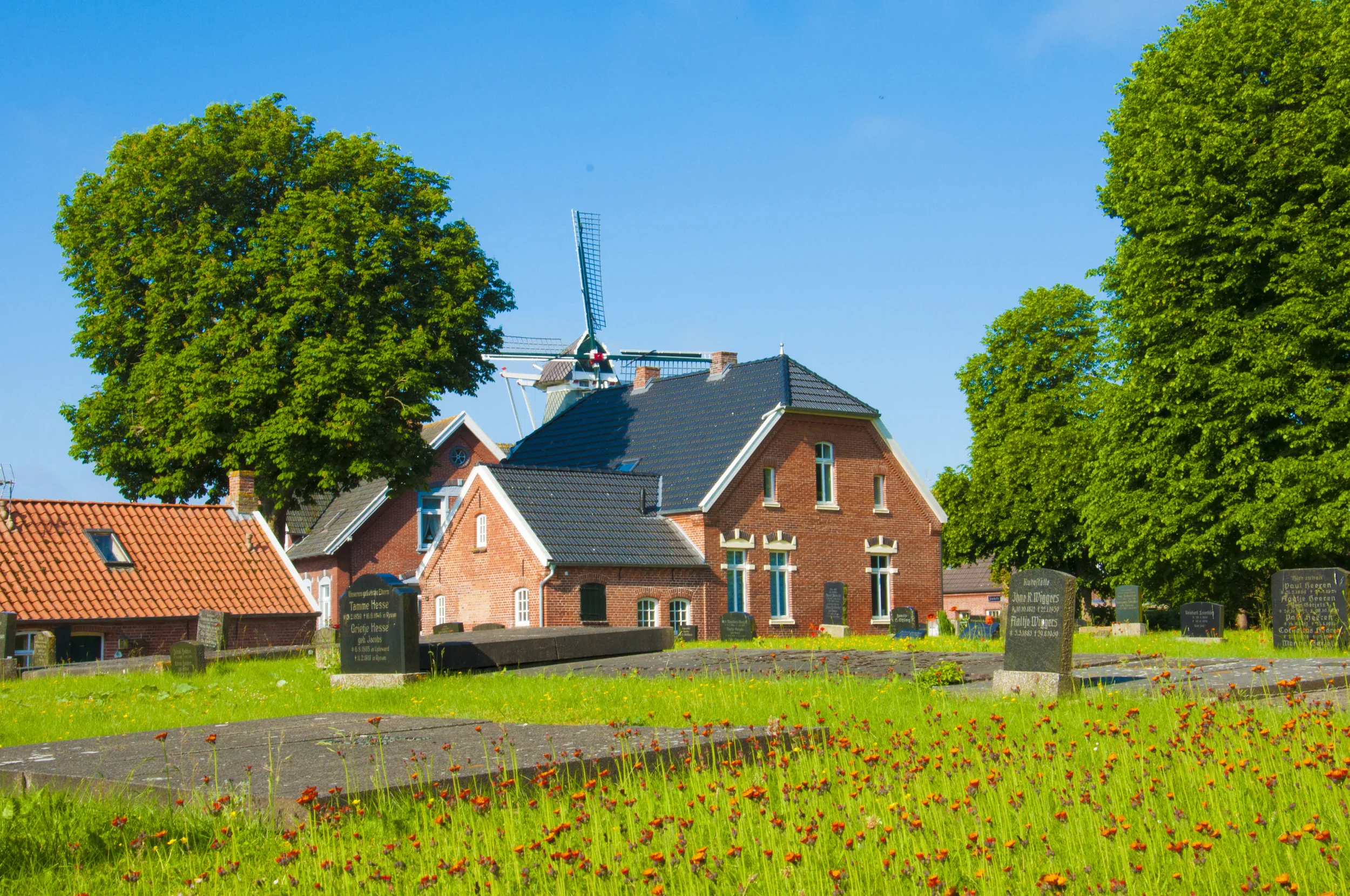Day 11 - Selling Cows to Build an Organ
by David von Behren
“Where are you?”
The message appeared on Laura’s phone as we sat eating a various assortment of pastries in a café-bakery in downtown Norden. The text message was from Chris. He was already at St. Ludgerikirche, our meeting spot at 8:15 a.m. I checked my phone, it was 8:26 a.m. We were late. We would have been on time, but sometimes food calls – especially German pastries.
The four of us (Laura, Kade, Brandon and myself) raced to the church and jumped in our small blue SUV. The four of us had stayed the night in a quaint apartment in Norden, Germany. Our new “home” was located in a pristine subdivision. The apartment was comfortable and just what we needed after a six-hour drive on the Autobahn from Leipzig to Norden. Chris, Gianmarco, Jennifer, Noel, and Andrew had stayed in a different AirBnb apartment down the road.
Thiemo, the organist at St. Ludgerikirche rode in the black van as we headed to our first destination for the day. Today, we would visit five different organs. Each would be in a different small village within half an hour's drive from Norden. All of these organs had been impressively restored in the past thirty years by Jürgen Ahrend, the region's specialist for pre-Baroque and Baroque restorations. We first arrived in Rysum, a tiny village 35 minutes away. Thiemo mentioned to us that Rysum had won a “village competition,” deemed one of the most beautiful villages in this region of Germany (Ostfriesland). As we strolled through the village, Andrew tapped me on the shoulder and told me, “You can tell that everything here has been made with love.” I nodded; the village was like nothing I’d ever seen.
The stunning village of Rysum.
We walked through narrow cobbled pathways to the church in Rysum. The current set-up of the church interior is a direct result of the Protestant Reformation—a configuration now some 500 years old!
The stunning village of Rysum.
This organ is one of the world's oldest, built in 1457 and pre-dating Christopher Columbus's voyages. We know the date of the organ's construction because church archives document that villagers gave some of their prize cows as donations as part of the fundraising effort. The organ has seven stops and one manual. Thiemo pointed out that the farther a listener was away from the organ, the louder the organ became. As we each took a turn playing the instrument, Thiemo taught us about ornamentation that would have been typical of the 15th century. In a technique called “trembling trills,” we learned to hold the main note of a trill and simultaneously plays quick repetitions of the note below to create a “trembling” effect.
We then departed to Uttum, another picturesque village housing yet another spectacular instrument from the 15th/16th century. The instrument was warmer in color; acoustically it filled the space beautifully.
Our third destination of the day was to the village of Pilsum, home of the Pilsum Kreuzkirche. This church houses a Grotjan Organ from 1694. The church itself was built in 1180.
Thiemo Janssen, our Norden host, gives us a brief overview of the Grotjan organ in Pilsum.
Today, the congregation in Pilsum is quite small, so services are held around this altar with congregants seated in a circle.
Today, the congregation in Pilsum is quite small, so services are held around this altar with congregants seated in a circle.
Upon departing Pilsum, we had lunch at the “Hohes Haus,” a historic hotel in Greetsiel, Germany. Greetsiel is a breathtakingly beautiful seaside village, known for its fishing boats that depart every night and return every morning with fresh fish and shellfish. It follows that the specialty of this restaurant was seafood - specifically a dish with miniature shrimp. All of our meals were amazing and we ended the lunch with delicious ice cream.
The fourth organ of the day was located in Marienhafe. A pupil of Schnitger designed and built this organ in 1713. He designed the flutes in a very late Baroque style. As with many organs we saw, there were no pedal stops – only a pedalboard to which manual stops could be coupled.
The 1713 Marienhafe Organ
The final organ of the day was the Evers organ, built in 1619 and still in stunningly beautiful condition.
Laura enjoys her time improvising on the Evers organ.
Back in Norden, we went out for a picnic along the North Sea. As we ate, we watched the sun set over the horizon and enjoyed one of our last meals in each other’s company. Gianmarco provided entertainment, dressing as a sheep and bleating at his animal friends. It was a wonderful way to end the night, and the capstone of what we all agreed was perhaps one of the most magical days of our trip.
Group hug following a truly magical day!





















































































































